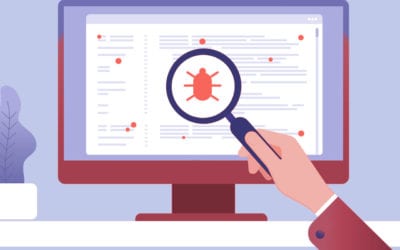Most if not all Integris clients are utilizing Proofpoint to better protect their networks and critical data from email threats like phishing, malware, spam and other forms of objectionable content. This best of breed, email security platform provides anti-spam, anti-virus, content filtering, archiving, and email encryption. In today’s threat environment it’s important for everyone to understand the basics as well as make a habit of employing simple steps to fully maximize its security value.
There is also a selfish reason to become better acquainted with the tool; Proofpoint can occasionally block and quarantine messages that look like spam but are 100% legitimate and very time-sensitive.
What follows is a basic user’s guide to Proofpoint’s primary services.
Antispam, antimalware, and content filtering
For spam and virus protection as well as content filtering, all incoming emails are inspected by the Proofpoint Messaging Security Gateway as soon as they arrive. This means that there will be some changes in how certain e-mails appear in your inbox.
- Email Quarantine: Messages that contain a virus, spam, or inappropriate content are sent to a Quarantine area. “Quarantine” means that the emails will be held in ProofPoint to prevent them from compromising the security of your computer and network. If email messages addressed to you are in the Quarantine, you will receive a notification, called Proofpoint Essentials – Quarantine Digest, in you Inbox. The email will come from Integris – ProofPoint Essentials. Make sure you review emails from this address.
- Within the “Digest” email you can View the message safely with ProofPoint to judge if it is safe or not. You can Release the email to your inbox. You can Release and Approve to release the email to your inbox and approve the sender so future emails arrive without quarantine. You can also Block the sender so future emails will be blocked, not quarantined.If you want to sign into your Proofpoint account to view, manage and control more granular details, you can do so by clicking on the link under Quarantine Digest which appears in the upper right-hand corner of the Digest email. As you can see from the following exhibit, there are a lot of settings to explore and you want to be mindful of not getting too mired in all the details.
We recommend doing a scan every few days to make sure you didn’t miss any important messages that originally appeared in the regular digest emails.
- URL Protection: URL defense identifies threats, including phishing and targeted attacks, by catching malicious URLs before you click and get infected. The link for the URL will show proofpoint.com as part of the link. Be careful to review the link and only click if you are absolutely certain it is valid. If ProofPoint determines the URL is malicious, it will display a blocked message when the link is selected.
Encryption
Email encryption is the process of encrypting, or disguising, the content of email messages in order to protect potentially sensitive information from being read by anyone other than intended recipients. Encryption often includes authentication. This optional add-on service, allows for outgoing emails to be routed to the Email Encryption Service before being sent to the final destination and does not apply to internal or normal email traffic. For instance, tax forms with personal identifying information or bank account numbers being sent to your CPA should be encrypted while emails to colleagues about an upcoming sales meeting are okay to send in the standard manner.
- The encryption is triggered by the word ENCRYPT in the subject line. Please note the word ENCRYPT must be in brackets and it is NOT case sensitive. In the subject line use [encrypt] or [Encrypt]. The trigger word is removed from the subject email on the recipient side.
- If the outgoing email is found to contain such content, the email is routed to the ProofPoint Encryption Service. The email is stored and an email notification is sent to the recipients to direct them back to the encryption service, where they can read and respond to your email.
- The sender receives a notification informing that your email has been selected for encryption. When this happens, you do not need to take action, because the email has been sent.
- The recipient receives notification with a link. They will need to select the link and register/sign in.
- Responses are delivered to your inbox. You can reply to responses you receive to your inbox. Replies are also encrypted.
Have any questions? Be sure to let us know. We’re here to help.



